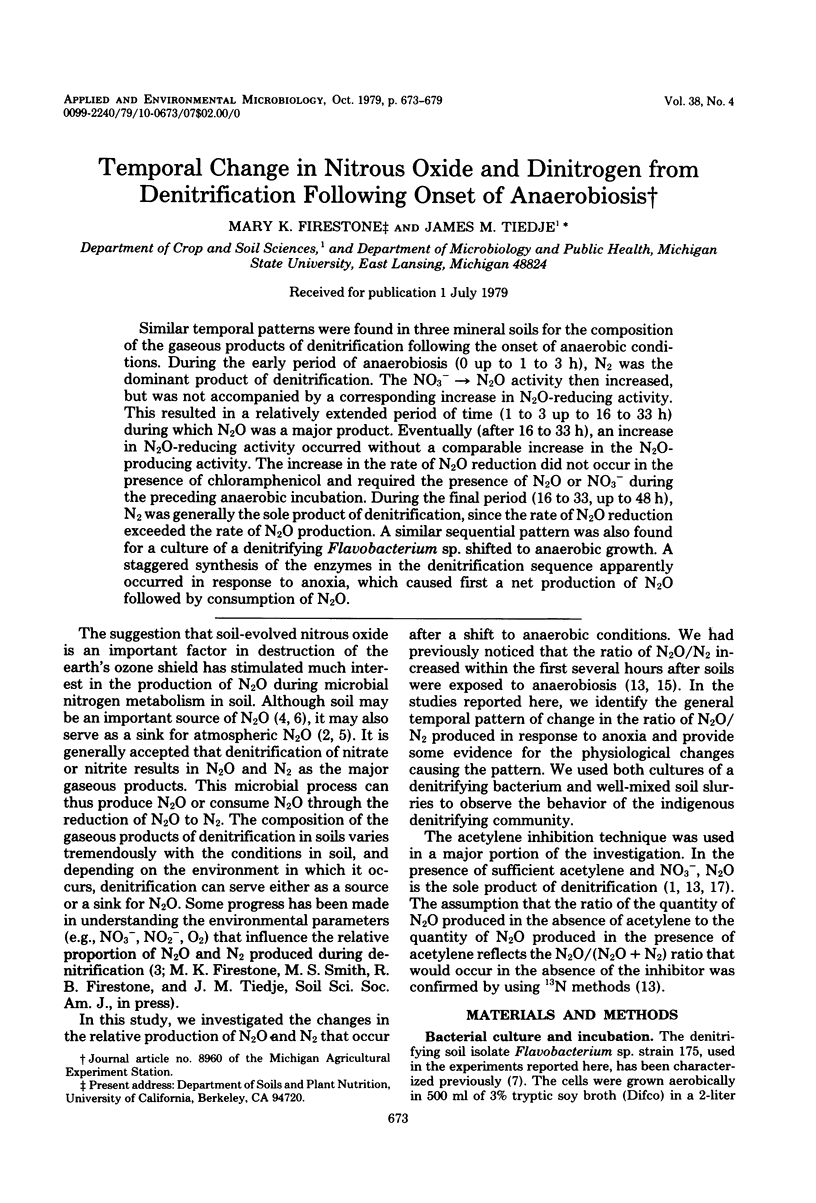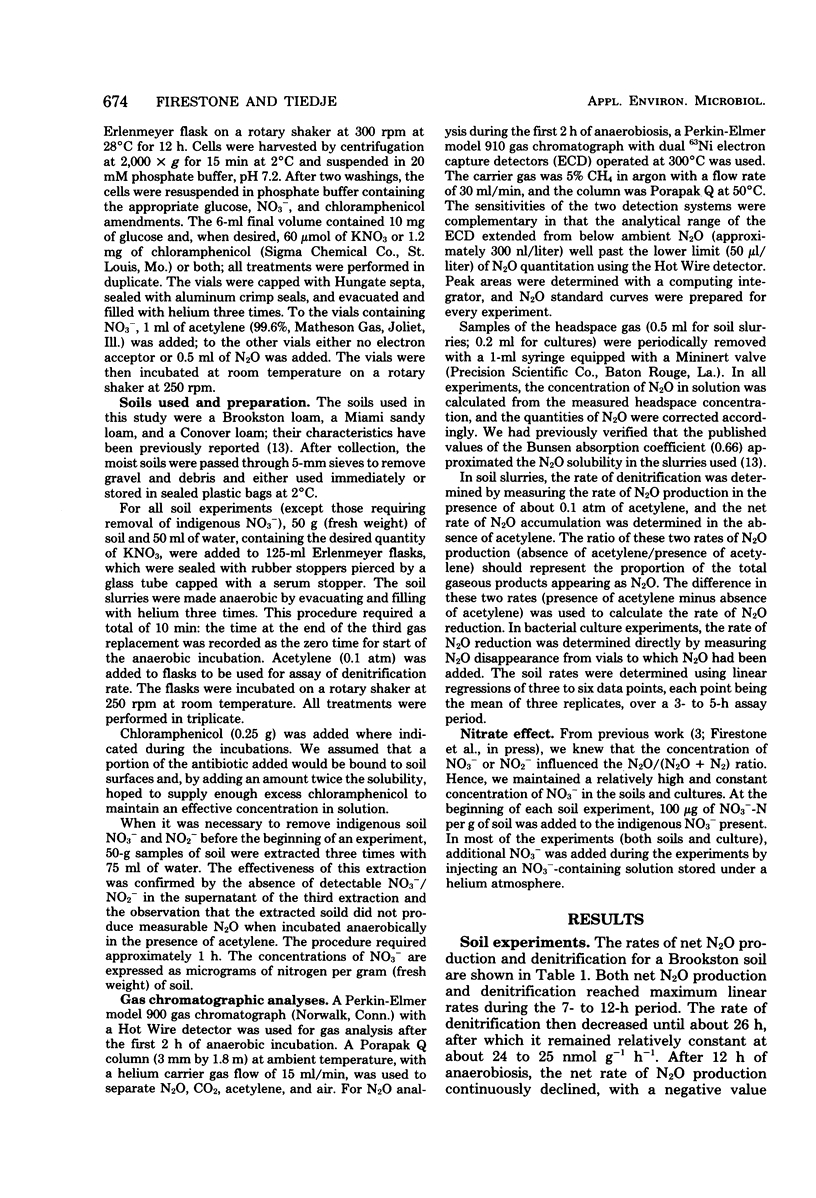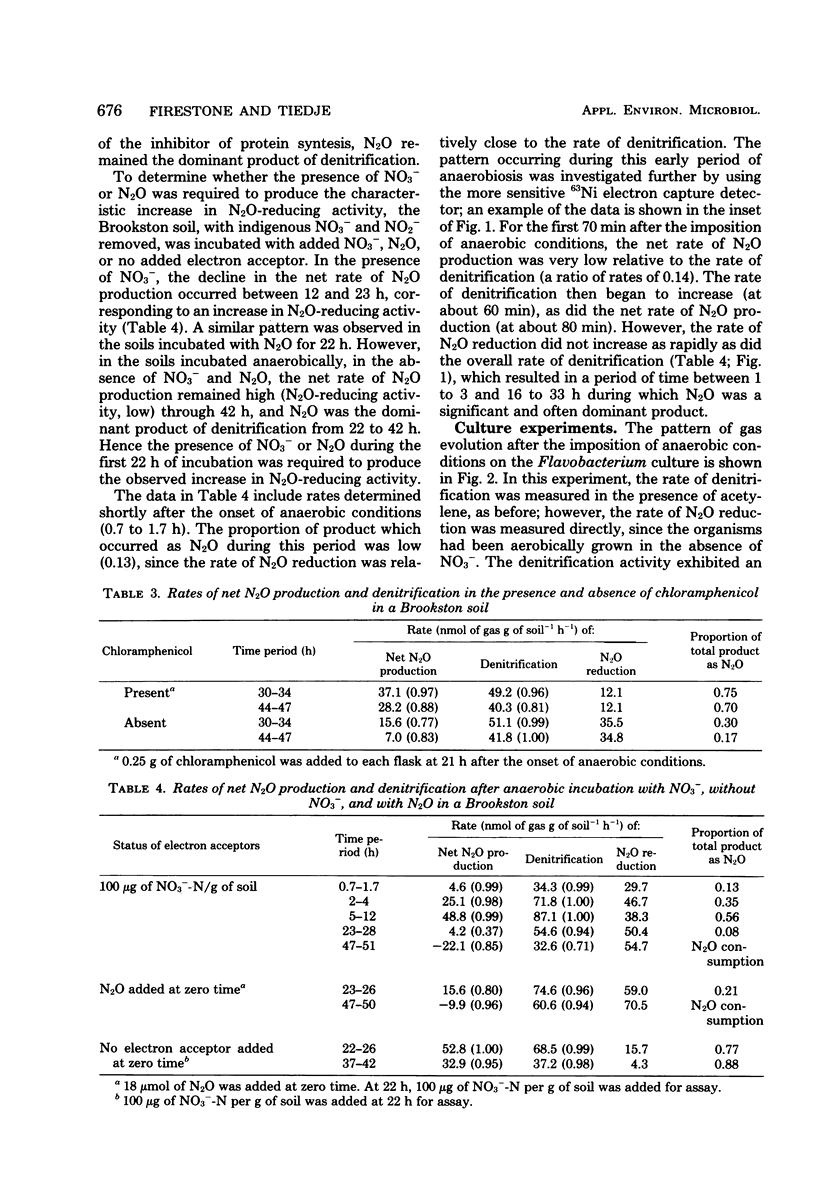Abstract
Similar temporal patterns were found in three mineral soils for the composition of the gaseous products of denitrification following the onset of anaerobic conditions. During the early period of anaerobiosis (0 up to 1 to 3 h), N2 was the dominant product of denitrification. The NO3− → N2O activity then increased, but was not accompanied by a corresponding increase in N2O-reducing activity. This resulted in a relatively extended period of time (1 to 3 up to 16 to 33 h) during which N2O was a major product. Eventually (after 16 to 33 h), an increase in N2O-reducing activity occurred without a comparable increase in the N2O-producing activity. The increase in the rate of N2O reduction did not occur in the presence of chloramphenicol and required the presence of N2O or NO3− during the preceding anaerobic incubation. During the final period (16 to 33, up to 48 h), N2 was generally the sole product of denitrification, since the rate of N2O reduction exceeded the rate of N2O production. A similar sequential pattern was also found for a culture of a denitrifying Flavobacterium sp. shifted to anaerobic growth. A staggered synthesis of the enzymes in the denitrification sequence apparently occurred in response to anoxia, which caused first a net production of N2O followed by consumption of N2O.
Full text
PDF






Selected References
These references are in PubMed. This may not be the complete list of references from this article.
- Balderston W. L., Sherr B., Payne W. J. Blockage by acetylene of nitrous oxide reduction in Pseudomonas perfectomarinus. Appl Environ Microbiol. 1976 Apr;31(4):504–508. doi: 10.1128/aem.31.4.504-508.1976. [DOI] [PMC free article] [PubMed] [Google Scholar]
- Gamble T. N., Betlach M. R., Tiedje J. M. Numerically dominant denitrifying bacteria from world soils. Appl Environ Microbiol. 1977 Apr;33(4):926–939. doi: 10.1128/aem.33.4.926-939.1977. [DOI] [PMC free article] [PubMed] [Google Scholar]
- Matsubara T., Mori T. Studies on denitrification. IX. Nitrous oxide, its production and reduction to nitrogen. J Biochem. 1968 Dec;64(6):863–871. doi: 10.1093/oxfordjournals.jbchem.a128968. [DOI] [PubMed] [Google Scholar]
- Matsubara T. Studies on denitrification. 8. Some properties of the N2O-anaerobically grown cell. J Biochem. 1971 Jun;69(6):991–1001. doi: 10.1093/oxfordjournals.jbchem.a129572. [DOI] [PubMed] [Google Scholar]
- Payne W. J., Riley P. S., Cox C. D., Jr Separate nitrite, nitric oxide, and nitrous oxide reducing fractions from Pseudomonas perfectomarinus. J Bacteriol. 1971 May;106(2):356–361. doi: 10.1128/jb.106.2.356-361.1971. [DOI] [PMC free article] [PubMed] [Google Scholar]
- Payne W. J., Riley P. S. Suppression by nitrate of enzymatic reduction of nitric oxide. Proc Soc Exp Biol Med. 1969 Oct;132(1):258–260. doi: 10.3181/00379727-132-34192. [DOI] [PubMed] [Google Scholar]


